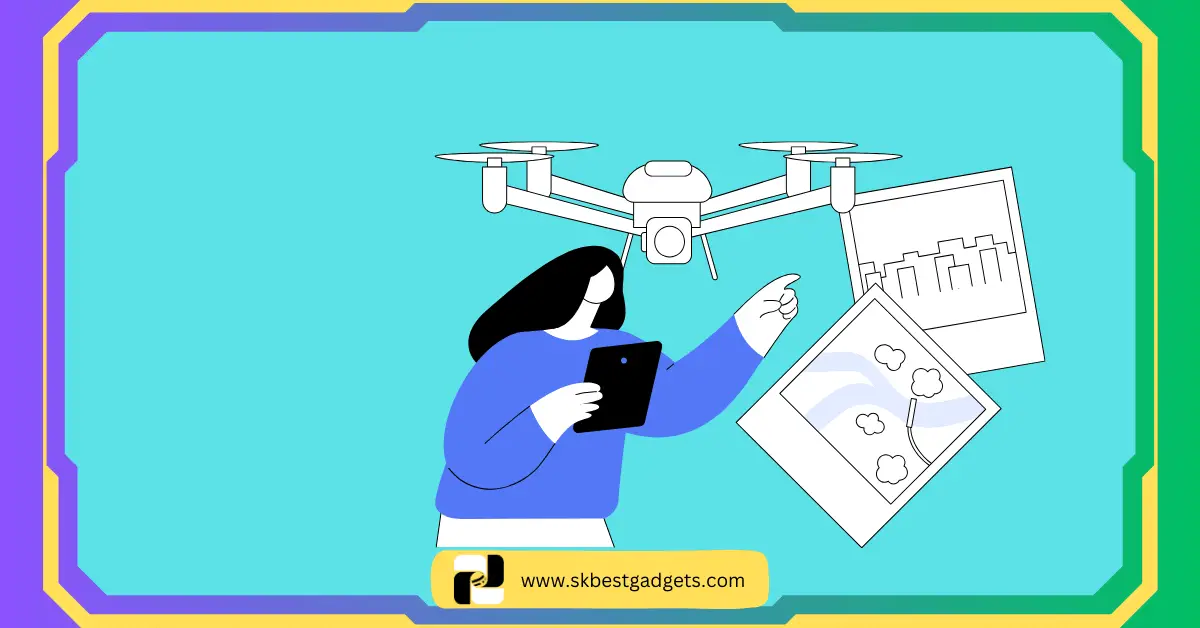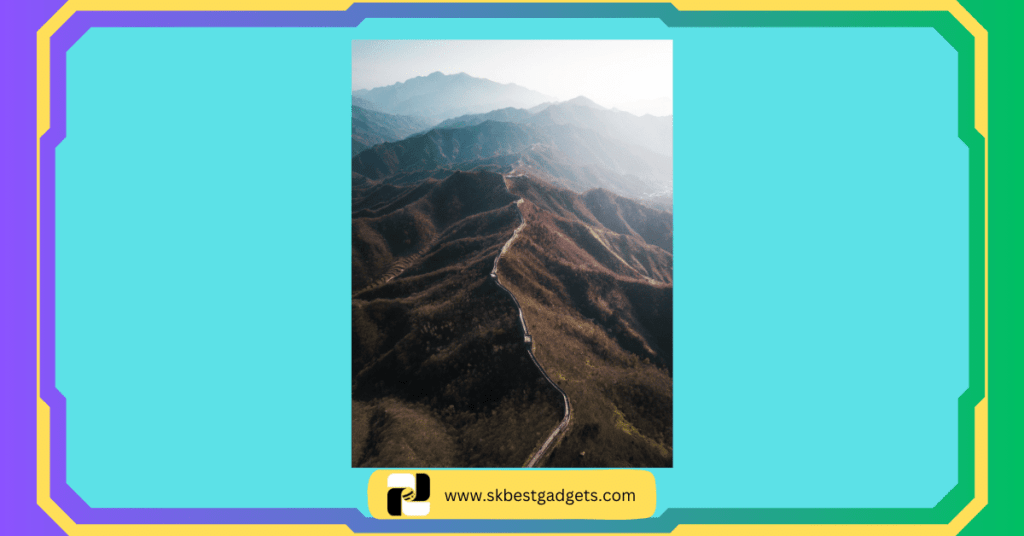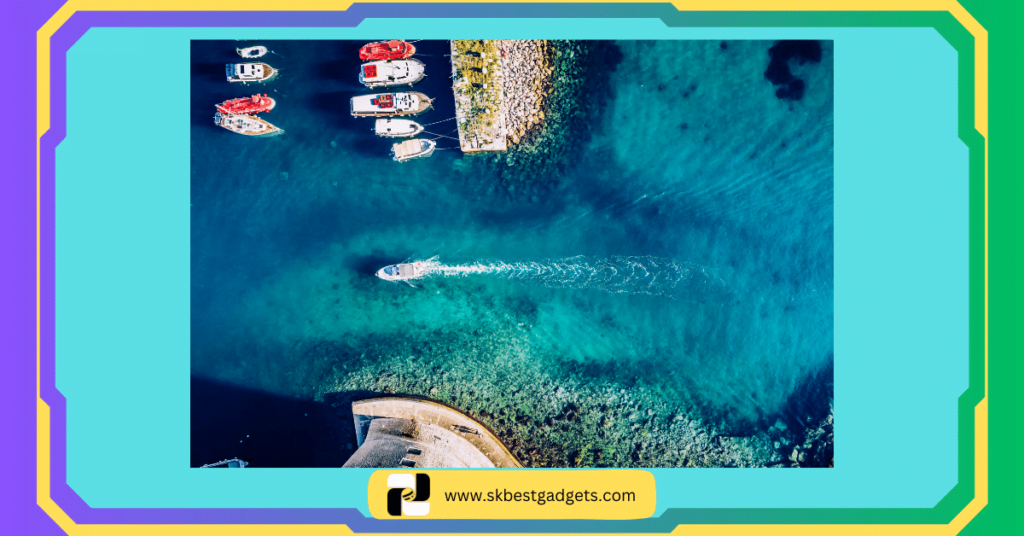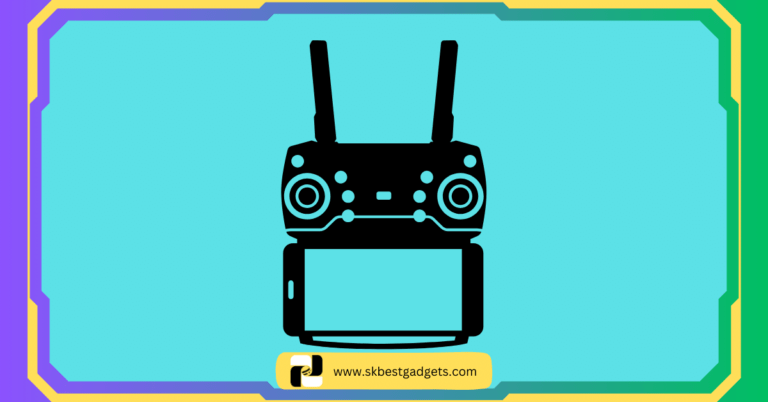What is Drone Photography? A Comprehensive Guide 2023

In the exciting realm of modern photography, there’s a game-changer that’s taken the art of capturing breathtaking moments up a notch – quite literally.
Say hello to drone photography, where those nifty unmanned flying machines have completely changed the game in how we see and snap our world.
In this article, we’re diving headfirst into the intriguing world of drone photography, and trust me, no question’s going unanswered.
We’ll start with the basics of what drone photography is all about and then dig into how these high-flying gadgets work their magic. We’ll spill the beans on the secrets behind snagging those jaw-dropping aerial shots.
So, hop on this adventure with me as we break down the art and science of drone photography, uncover the roles and gigs of drone photographers, demystify the tech that makes drone cameras tick, and reveal the essential ingredients for top-notch drone photography.
Plus, we’re throwing in some must-know tips and tackling those burning questions to gear you up for epic drone photography.
Buckle up and get ready for takeoff into the mesmerizing world of drone photography, where the sky’s not the limit – it’s just the start of an endless creative journey.
Key Takeaways
- Drone photography captures stunning aerial shots with versatile unmanned aircraft.
- Drones excel in real estate, construction, mapping, and environmental monitoring.
- Know and follow drone laws, including registration and remote pilot certification.
- Master drone photography with tips like shooting in RAW format.
- Use the rule of thirds for balanced and appealing compositions.
- Lower ISO settings for cleaner, crisper drone photos.
- Experiment with angles, filters, symmetry, and lighting for unique shots.
- Take precautions, maintain equipment, and monitor weather conditions.
- Drones offer cost-effective access to hard-to-reach locations and stunning perspectives.
- Drone photography unleashes creativity; explore this exciting and rewarding field.
What is drone photography? (Detailed Information)
Drone photography is all about using those cool drones to snap awesome pics and videos. These drones, which stand for unmanned aerial vehicles (UAVs), can be piloted remotely or even fly on their own.
And guess what? They come packing some seriously good cameras that capture stunning shots and footage from all sorts of angles and heights.
Now, why should you care about drone photography? Well, for starters, drones can soar way higher than we humans can, giving you mind-blowing aerial shots of landscapes, cities, and just about anything you fancy.
They can also venture into those tricky spots that you’d never reach on foot, like soaring over mountains, diving into forests, or cruising over lakes.
The coolest part? Drone photography isn’t just for the pros – it’s a hot hobby for folks who love a bit of high-flying fun. Plus, it’s a big deal in industries like real estate, tourism, marketing, and even journalism. So, whether you’re snapping pics for fun or business, drones have your back!

What are the benefits of drone photography?
Why should you care about drone photography? Well, it’s the rock star of the photography world, and here’s why:
Mind-Blowing Angles: Drones can snag shots from angles that’d leave traditional methods scratching their heads. Get ready for seriously creative visuals that’ll make your project a showstopper.
Picture capturing stunning aerial views of a city, a sweeping landscape, or a majestic building – all thanks to a trusty drone.
Budget Bliss: Say goodbye to breaking the bank on helicopters or planes. Drones are your wallet-friendly way to score epic aerial footage, especially for those adrenaline-pumping locations.
Effortless Efficiency: Need multiple shots from different angles without the headache? Drones have your back, saving you time and cash with quick and easy aerial captures.

Versatile MVPs: Drones aren’t just one-trick ponies. They’re your go-to for photography, videography, and even mapping. Talk about a versatile sidekick for all your projects.
Safety First: No need to worry about risky business. Drones are champs at being operated safely and under control. That’s a big win when you’re flying over people or property.
So, whether you’re a pro or just looking for a new hobby, drone photography is the name of the game!
What are some examples where drone photography is used?
Here are some cool ways people are using drone photography:
House Hunting Views: Drones are getting in on the real estate game, giving you awesome bird’s-eye views of properties. It’s like having your tour from the sky, making it easier to decide if that dream house is the one.
Building Buzz: Drones are also on construction duty, capturing progress pics of building projects. Contractors and clients can keep a close eye on how things are shaping up, catching any hiccups early on.
Mapping Marvels: Drones can whip up super-accurate maps and surveys of land and stuff. This comes in handy for things like city planning or checking out the aftermath of Mother Nature’s tantrums.

Eco Guardians: Drones are Earth’s watchful eye, checking out what’s happening with things like deforestation or water pollution. Organizations use them to see how we’re messing with the planet and brainstorm ways to make things better.
Cinematic Sky Highs: Lights, camera, drone action! Filmmakers are using drones to capture mind-blowing aerial shots for movies, TV shows, and ads. It’s all about cranking up the visual wow factor.
Drone photography? It’s a hot and happening field that’s soaring to new heights!
Are there any laws for drone photography?
Yes, there are laws governing drone photography in most countries. These regulations can vary considerably from one country to another, but they often include common restrictions that aim to ensure the safe and responsible use of drones.
These restrictions typically encompass the following aspects:
1. Restricted Airspace: One of the fundamental restrictions is flying drones in restricted airspace, which includes areas near airports or military bases. These locations are off-limits due to safety and security concerns.

2. Over People and Vehicles: Flying drones over people or moving vehicles is generally prohibited to minimize the risk of accidents and injuries.
3. Nighttime Operations: Operating drones at night is often subject to additional regulations to maintain safety and visibility standards.
4. Licensing Requirements: Some countries require drone pilots to obtain a license or permit before operating a drone. Compliance with these licensing requirements is crucial to avoid legal issues.
5. Privacy Considerations: Taking photos or videos of people without their consent can infringe on privacy laws and is typically prohibited. Respecting individuals’ privacy is an essential aspect of drone photography.
In addition to these general restrictions, specific laws and regulations may apply to drone photography in certain areas or countries. For instance, in the United States, the Federal Aviation Administration (FAA) has established a set of comprehensive rules for drone photography, which include:

1. Drone Registration: Drones must be registered with the FAA, ensuring that the authorities can track and identify drone owners.
2. Remote Pilot Certificate: Drone pilots must obtain a Remote Pilot Certificate (Part 107) from the FAA, demonstrating their knowledge and competence in operating drones safely.
3. Visual Line of Sight (VLOS): Drones must be operated by the FAA’s Visual Line of Sight (VLOS) rules, which mandate that operators maintain a clear and unobstructed view of their drones during flight.
4. Avoiding People and Vehicles: The FAA also prohibits flying drones over people or moving vehicles, emphasizing the importance of safety.
5. Restricted Airspace: As previously mentioned, drones must not be flown in restricted airspace areas.
To ensure your drone photography remains legal and safe, it is crucial to research and adhere to the specific laws and regulations applicable in the country or region where you plan to operate your drone.
Additional information and guidance can often be found on the FAA’s website or the websites of other relevant government agencies.

What is a photography drone?
So, what’s the deal with photography drones, you ask? Well, they’re drones with snazzy cameras onboard, and they’re all the rage with photographers and videographers. Why? Because they can snag jaw-dropping shots from the sky that’ll make your jaw drop!
Now, when it comes to picking your perfect photography drone, there are a few things to mull over:
- Camera Quality: No surprise here, the camera’s king. You’ll want one that’s packing serious pixels for those crisp and clear shots.
- Image Stabilization: To dodge those blurry mishaps, especially when the wind’s feeling feisty, you’ll want top-notch image stabilization.
- Flight Time: How long can your drone stay up in the air? Longer flight times mean more epic shots.
- Payload Power: Payload capacity is a fancy way of saying how much your drone can carry. That includes the camera, battery, and any extras you’ve got. Make sure it’s got the muscle for your gear.
- Price Range: These babies can be budget-friendly or wallet-busters, so pick one that suits your piggy bank.
So, that’s the lowdown on photography drones – the sky’s the limit for your photography game!

What does a drone photographer do?
So, let’s talk about drone photographers – the cool folks who use drones to snap mind-blowing aerial shots. These nifty flying machines bring a whole new level of awesome to photography.
Drone photographers wear many hats and find gigs in different fields:
- Real Estate: Imagine having killer aerial shots of houses on your property listing. That’s where drone photographers come in, making homes look stunning from the sky.
- Construction: They’re like the documentarians of construction projects, tracking everything from start to finish. It’s like a visual project diary.
- Events: Ever seen those epic aerial shots at weddings or concerts? Yep, drone photographers make those happen, adding a whole new perspective to events.
- Media: News outlets are catching on, using drone photographers to get bird’s-eye views of breaking news. It’s like being a news ninja in the sky.
- Law Enforcement: Even the police are in on it. Drone photographers help with crime scene surveillance and search and rescue missions. High-tech crime-solving!
To rock as a drone photographer, you need mad skills in both photography and drone flying. Oh, and knowing the drone rules is a must.

Here’s what a day in the life of a drone photographer looks like:
- Flight Planning: They plan drone flights with military precision, making sure it’s safe and following the rules.
- Taking Awesome Pics: They create eye-catching compositions and capture stunning aerial shots that tell a story.
- Editing Magic: After snapping pics, it’s all about enhancing them through post-processing wizardry.
- Promotion: They hustle to market and sell their drone photo services, building a booming business.
- Keeping It Fresh: Staying up-to-date with the latest drone photo trends and tech is a must.
If you’re itching to join this exciting field, here’s the playbook:
- Take a Course: Get schooled in both drone flying and photography.
- Fly Safely: Practice responsible drone flying until you’re a pro.
- Show Off: Build a killer portfolio to impress potential clients.
- Network: Connect with fellow drone enthusiasts to learn and share your experiences.
- Stay Sharp: Keep your finger on the pulse of drone photo tech and trends.
Drone photography is booming, and if you’ve got the skills and passion, you can fly high in this thrilling career, wowing clients and audiences with breathtaking aerial shots.
What makes good drone photography?
So, nailing awesome drone photos? It’s all about capturing mind-blowing shots from angles that’ll make your jaw drop. But hey, let’s break it down into some easy-to-digest bits:
Composition: Think of it as arranging your shot like a pro. Balance is key, and you want it to look visually pleasing. Consider what’s up close, in the middle, and the distance. Oh, and those sneaky leading lines? They’ll lead your viewer’s eyes right where you want them.

Lighting: Lighting can be your BFF or your worst enemy. Good lighting sets the mood. When you’re out with your drone, keep an eye on where the sun’s hanging out. Filters might come to the rescue to tweak the light, too.
Subject Matter: This is what your pic is all about. From up high, think about what’ll look super cool. Landscapes, cityscapes, architecture, and Mother Nature’s wonders are great choices.
Tech Stuff: Don’t let the technical bits scare you. Camera settings and post-processing are part of the game. Experiment, play around, and find what clicks for you.
Creativity: The best part? There are no rulebooks. Get creative, try new tricks, and don’t hold back. The sky’s the limit!
With a bit of practice and a whole lot of creativity, you’ll be wowing your friends and family with some seriously amazing drone shots.
What are the best tips for taking drone photos?
If you want to become a drone photographer then learning is a must for you and that’s why let me give you some of my best tips that will help you a lot.
Here are some of the best tips for taking drone photos:
Check the Weather Forecast: Before you take your drone out for a flight, always check the weather forecast. Flying in adverse weather conditions like strong winds, rain, or snow can make it challenging to control your drone and capture good photos.

Shoot in RAW Format: To enhance your editing capabilities later, shoot your drone photos in RAW format. This format retains more image data, giving you greater flexibility during post-processing.
Use the Rule of Thirds: Apply the rule of thirds, a composition technique that divides your frame into thirds both horizontally and vertically. Positioning your subject at the intersection of these lines can create more balanced and visually appealing photos.
Use a Lower ISO: Lowering the ISO setting on your camera can help reduce noise in your photos, resulting in cleaner and crisper images.
Take Advantage of Auto Exposure Bracketing (AEB): AEB allows your drone to capture multiple photos at different exposure settings. You can then blend these images in post-processing to create a more dynamic and well-exposed photo.
Be Prepared to Improvise: Drone photography doesn’t always go as planned. Be prepared to adjust your shots on the fly to adapt to changing conditions or unexpected obstacles.
Experiment with Different Angles and Perspectives: Don’t hesitate to explore various angles and perspectives to find what works best for your subject. Changing your viewpoint can lead to unique and captivating shots.

Use Camera Lens Filters: Camera lens filters can improve your photos in several ways, such as reducing glare, enhancing contrast, or adding creative effects to your shots.
Seek Out Symmetry, Patterns, and Lines: Look for symmetry, patterns, and leading lines in your surroundings. These elements can make your photos more visually engaging and intriguing.
Play with Lights and Shadows: Pay attention to how light and shadows interact in your scenes. The way light falls can significantly impact the mood and aesthetics of your photos.
Take a Drone “Selfie”: Capture your flying experience in a fun and unique way by taking a drone selfie. This perspective offers a fresh angle to showcase your surroundings.
Watch Your Shutter Speed: Adjust your shutter speed according to your subject and the desired effect. For landscapes, a slower shutter speed can create a dreamy effect by blurring clouds and water. For fast-moving subjects, use a faster shutter speed to freeze the action.
Try Long-Exposure Images: Experiment with long-exposure photography to capture the motion of clouds, water, or traffic. This technique can yield striking and dynamic images.
Take Precautions for Drone and Remote Connection: Ensure your drone is in excellent working order, with fully charged batteries. Maintain a clear line of sight to your drone to maximize your control and minimize the risk of signal loss.

By following these tips, you can elevate your drone photography skills and capture stunning aerial images.
Important FAQs
What is drone photography?
How does drone photography work?
What are the advantages of using drones for photography?
Do I need special equipment for drone photography?
Is drone photography legal?
How can I improve my drone photography skills?
What are some popular applications of drone photography?
What are the challenges of drone photography?
Final Thoughts
Drone photography has transformed the photography game, opening up mind-blowing perspectives and creative opportunities that were once out of reach.
From snagging epic aerial shots of landscapes to lending a hand in industries like real estate, construction, and media, the uses of drone photography are off the charts.
As you dive into the mesmerizing world of drone photography, keep in mind that the sky’s just the starting point of an awesome creative journey. Whether you’re a seasoned pro or just starting, drone photography has an irresistible appeal.
But hey, we’re curious about you! Have you given drone photography a shot, or are you itching to jump into this exciting field? Share your thoughts, stories, and burning questions in the comments. Let’s build a lively community of drone photography enthusiasts who can inspire and learn from one another.
And don’t be shy—spread the word! Share this article with your buddies, family, and fellow photography fanatics. Together, we’re going to take our drone photography game to whole new heights.
What is a VTOL Drone? & How They Work and Why They’re So Cool (2023)
Ever heard of VTOL drones and wondered what makes them cool? 🚁🌟 Find out in this 2023 article! Learn how they work and why they’re taking the drone world by storm. Don’t miss it! 📋🛫







